On Sunday, a new family of bumblebees will be buzzing around inside a bumblebee hive at the Tauranga City Library. The only thing I've ever really learned about bumblebees though is that it's impossible for them to fly.
According to all known laws of aviation, there is no way they can. Their wings are too small to get their little bodies off the ground. They fly on anyway, because clearly, a bumblebee doesn't care what humans think is impossible.
On talking with author Rachel Weston I discover they also have other super powers, like the ability to see ultraviolet light. And they have five eyes, four wings, and very smelly feet.
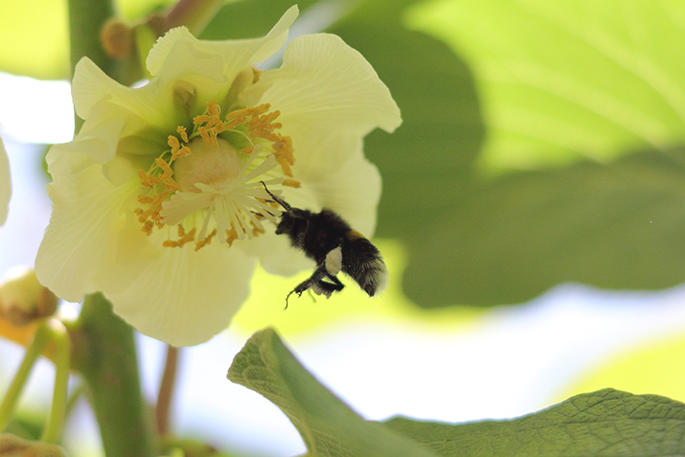
Bumblebee pollinating kiwifruit flower. Photo: Mike Sims
I asked Rachel how she came to be studying the bumblebee.
'By complete accident actually,” says Rachel. 'My husband Stuart works in the kiwifruit industry. He came home one afternoon and said to me ‘do you know where bumblebees live?' I said ‘I guess they live in a hive just like other bees?'
'He said ‘they live underground', but I didn't believe him.'”
She laughs at the memory.
'I researched it on line and found out that they make their homes in holes already established by a mouse or other animals underground.
'All these other interesting things came up too and I thought, ‘how come I've never heard this about bumblebees?' I thought that kids would love it, it's so cool.”
Her bumblebee journey had started, and soon after she read ‘A Sting in the Tale', a book by Dave Goulson who founded the Bumblebee Conservation Trust in the UK in 2006.
'From Dave's book I learned that bumblebees have smelly feet. We have our own kiwifruit orchard, so I rang up Biobees, a company that supplies bumblebee hives to kiwifruit orchards. They sent me a hive in the mail, and my son and I popped the little buzzing box in the orchard.
'We opened up the little slide-across door, stood away and watched them coming and going. It was so fascinating.”
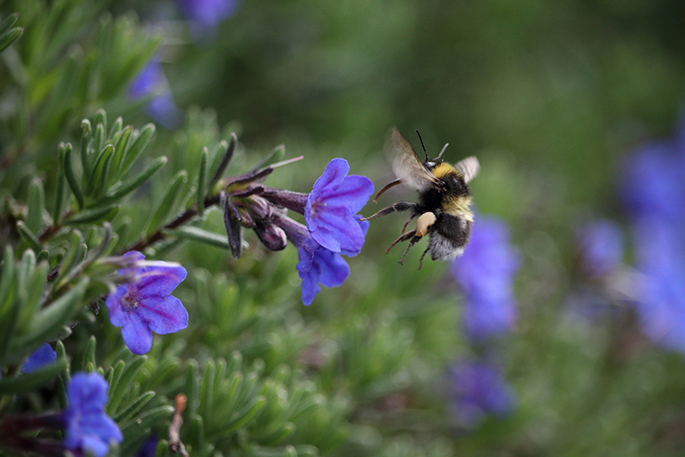
Bumblebee. Photo: Mike Sim
The bumblebees' interesting attributes have caught the attention of avocado as well as kiwifruit growers.
The Biobees website states that ‘Bumblebees are active at far lower temperatures than honeybees, and as such are important pollinators of early flowering crops and varieties, and will begin foraging earlier, and work later than honeybees on any given day. Similarly, bumblebees are more robust, and will forage during light rain and on cloudy days. Their large hairy body, and bumbling movements across flowers make them incredibly efficient pollen transferors.”
'Some kiwifruit orchards are covered in hail netting or enclosed canopies, and bumblebees are being trialled and used for pollinators on these orchards,” says Rachel.
The Biobees website lists capsicum, courgette, eggplant, melons, tomatoes and strawberries as other hothouse crops that bumblebees are useful for, as they don't mind being enclosed.
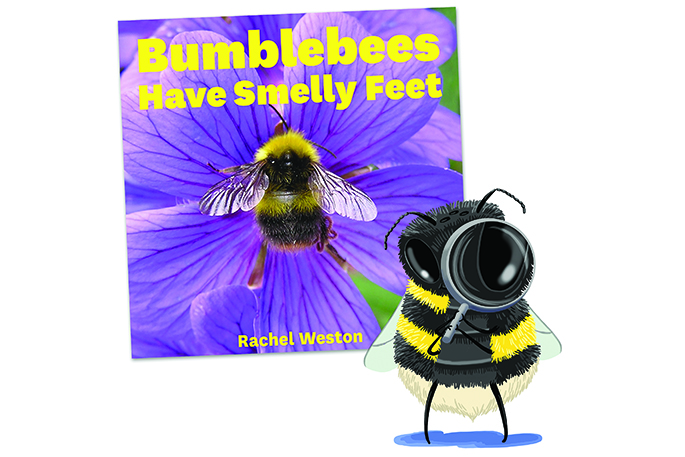
Rachel's ‘Bumblebees Have Smelly Feet' is an interactive and well-illustrated book packed full of information on why bumblebees have whiffy feet, how their bodies work, what their super powers are, their family and life cycle, and how humans can help this integral insect survive.
Inspired by her husband's initial question, her flight of discovery about bumblebees has led her to uncover fascinating factoids about their eco-system, food and crop production.
'At the end of summer the nest dies off naturally”, says Rachel. 'All the worker bees, males and queen bee die, only the daughter queen bumblebees survive. They hibernate in the ground in a little hole.”
'They hibernate like a bear, go through metamorphosis like a butterfly, and sit on eggs like a mother hen.”
'The queen sticks pollen into a little wax cup she has made, lays eggs on top of that, and then sits on them. She vibrates her flight muscles generating heat in her body which keeps her eggs warm.
'This first set of eggs hatch, eat the pollen in the cup they've been laid into, and develop into female worker bumblebees. Some go out to work gathering nectar and pollen while others help the queen in the nest, while she lays the next cycle of eggs.”
'After this she creates male bees, and then she changes again to laying queen bees at the end of the season. They stay in the hive and get big and fat, go out and mate with males, and then hibernate through the winter. Meanwhile the males die.”
She sent Deborah Hinde her manuscript, after meeting her at a Joy Cowley writers and illustrators weekend.
'I asked if she would illustrate it and she said ‘absolutely, I'd love to be on board'. She's been fantastic.”
The book is being launched at Tauranga Library on September 8. Rachel says Mike Sims from Biobees is growing a new family of bumblebees inside a perspex hive to enable everyone attending the library launch to see a live bumblebee hive in action.
Schools will be able to buy the book directly off Rachel's website.
'There's been some great pre-orders already from schools that are doing sustainability and garden-to-table projects, and studying bees in general.”
‘Bumblebees Have Smelly Feet' will be out in shops on September 2.
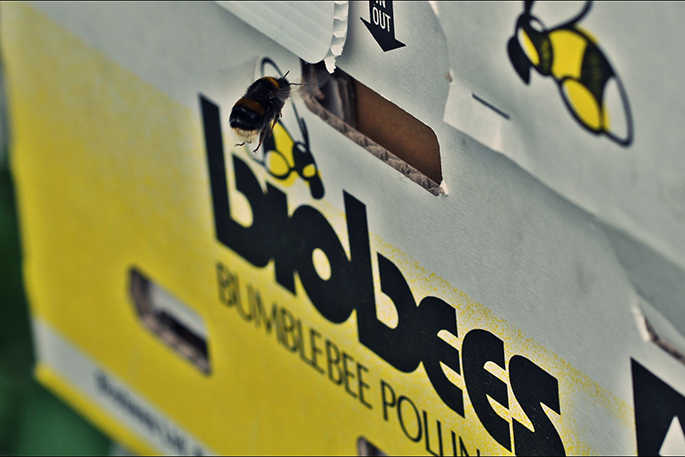
Bumblebee going back into manmade home. Photo: Mike Sim.

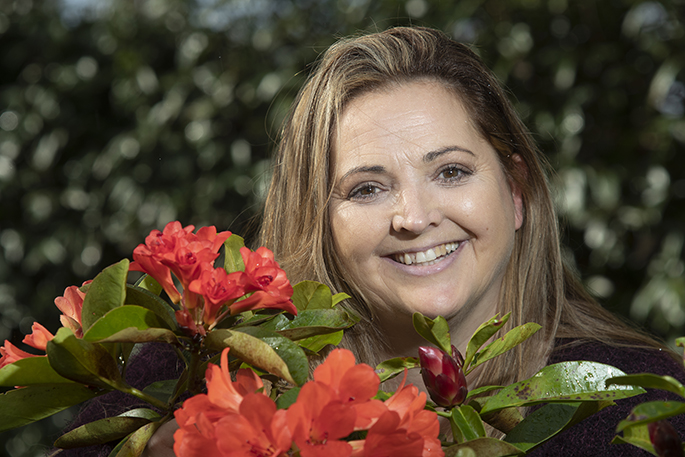

1 comment
Factoids??
Posted on 08-09-2019 07:34 | By socantor01
Does she really mean factoids? A factoid is essentially a lie, an älternative truth".
Leave a Comment
You must be logged in to make a comment.